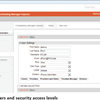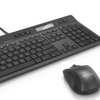There is a popular thread in the VoIP Forums that discusses the need for users of the popular Cisco ATA-186 to be able to download H.323 or SIP firmware for the Cisco ATA-186. Coincidentally, I was Googling ATA 186 SIP Firmware and I came across a past Internet Telephony article of mine written in July 2003 titled "The Amazing Cisco ATA-186 And Top ITSPs Compared" where I discussed how to "hack" the Cisco ATA-186 so you can download SIP or H.323 firmware. Well, it wasn't a true hack in the sense of the word, but let's not split hairs. I thought I would share this article from 2003 since it still may be of benefit to readers of my blog. Bear in mind, that some of the info is this article is a bit dated, such as the pricing, but it does give some context to see what the state of the VoIP industry was in mid-2003 versus the end of 2004 (just look at the VoIP price drops) -- and of course you can read how to get the SIP or H.323 firmware. I should probably do a new article comparing the top ITSPs (Internet Telephony Service Providers)
As to the 200HP Viper supercharger I mention in the article (and was hoping to buy), other priorities came up - such as a wedding & buying a house, but if you'd like, you can make a donation to the "Viper Supercharger Fund". Just Paypal me - [email protected]. ![]()
July 2003 Internet Telephony Magazine Cc: column
"The Amazing Cisco ATA-186 And Top ITSPs Compared"
That's it! I've had it with these $200 phone bills! I exclaimed to my fiancé.
We've got to find a more inexpensive solution. I was well aware of PC-to-Phone solutions, but my
fiancé wasn't about to boot up the PC and wear a headset in order to make a phone call. And that still
wouldn't solve the problem of inbound calls -- wed have to pay SBC/SNET a monthly fee just for the privilege of receiving calls. I
don't think so!
Vonage
So I set upon a mission to get rid of SBC/SNET altogether and since I cover the Internet telephony space, I knew there were much less expensive alternatives. In fact, I was well aware of a company called Vonage, which utilizes your existing broadband connection to offer flat rate long-distance anywhere in the U.S. or Canada. In addition, they give you a real phone number so you
don't need a PC to receive VoIP-originated calls.
How does it work?
Essentially Vonage works by mapping IP addresses to telephone numbers. Vonage sends you a Cisco ATA-186 (SIP-compliant) gateway, which connects via Ethernet to your broadband connection. The ATA-186 also has a phone jack for connecting any standard analog phone. The telephone number is then assigned remotely to the ATA-186s IP address when the device registers with the network. Mapping the telephone number to the ATA-186 upon network registration allows you to use the same telephone number when you travel assuming you have a broadband connection and you bring the ATA-186 along.
In fact, I tested it last year for a product review and was very pleased with the sound quality. At that time, Vonage was the only ITSP offering both inbound (real phone number, not an IP address) and outbound capabilities. But things change quickly in the Internet telephony industry, so I thought I would research the other major ITSPs and see if they are offering similar services to Vonage.
Pros:
-Offers a real (Direct Inward Dial) phone number.
-Cisco ATA-186 is included free when you sign-up.
-Virtual number for another city for $5.00 per month.
-Flat-rate monthly fee for long-distance to U.S. and Canada.
-Offers 911 service with their VoIP service.
-Provides numbers in more than 85 area codes.
-Competitive International Rates.
Cons:
-Their explosive growth has resulted in inability to provide good customer service. Requires the ATA-186 to work.
-They don't offer their own proprietary PC-phone software.
-Doesn't work with Windows Messengers Communications Service (SIP-based).
-Incoming caller ID will only show the telephone number of the party calling, not their name.
-No call waiting caller ID.
Net2Phone
I contacted Net2Phone, a leader in the VoIP space, and asked them if they planned on offering a service similar to Vonage. They told me that they indeed offer something similar to Vonage in that you could use the same Cisco ATA-186 gateway to connect to the Net2Phone network. They told me it was in beta trials and added me to the list of beta users to try out the service and they sent me detailed instructions on how to configure my ATA to work with their service.
Hacking Cisco's ATA-186
In order to test the Net2Phone service, I first needed a SIP-enabled Cisco ATA-186. I had two ATAs in the lab, one loaded with H.323 firmware and the other set up to work with Vonage. One of these ATAs would have to have its firmware erased or upgraded to support SIP. Actually the Vonage ATA unit already had the SIP firmware, but its password-protected so you cant access the ATAs Web interface to make changes to work with other ITSPs. There are however ways of hacking the Vonage ATA to work with other ITSPS by resetting it to defaults so you can access the Web interface, but I
don't recommend this unless you are willing to potentially lose your Vonage access. Although, if you do try it you can in theory restore your Vonage service by plugging these settings into the Web configuration page:
UseTFTP: 1
TFTP Url: Try either 12.144.47.24 or 64.157.171.150
Encrypt Key: 1
For kicks, I decided to upgrade both the H.323 ATA-186 to SIP and reset the Vonage ATA back to defaults so I could enter the SIP parameters. When I went to
Cisco's site to download the SIP firmware I discovered that I needed to have a paid support contract to download the firmware. So I e-mailed Cisco explaining that I was writing about the ATA-186s power and flexibility and ability to be used by multiple ITSPs. I mentioned that in order to write about the ATA-186 I would need to reset the device to factory defaults and that I would need to gain access to the SIP firmware for download. The Cisco person told me that they
don't just give away the factory reset information. He then mentioned that information is only available through Cisco TAC for qualified customers with active service contracts. Oy! I thought to myself,
Doesn't he realize Im trying to give Cisco some press?
Beyond Top Secret
In any event, rather than try to explain myself, I figured the factory reset information was probably to be found on the Internet somewhere and I could probably find the SIP firmware as well. Sure enough, I simply Googled reset ATA-186 and the information appeared. I simply needed to dial 322873738# or FACTRESET on the phone. So much for paying Cisco for that top-secret information!
Getting the SIP Firmware
Now the tough part -- finding the SIP firmware on the Internet. From what I understand you have to pay a licensing fee to have a copy of the SIP firmware installed onto your ATA-186. Thus, I didnt expect any legitimate Web sites to blatantly offer the SIP firmware for downloading. Most of my Google results for keyword Cisco ATA 186 SIP firmware download kept taking me back to
Cisco's site, which was pointless since it was unavailable there unless you a
paid contract. It took some creative Googling, but I finally found the keywords to find the SIP firmware. First, I should point out that 1,0,0,# are the DTMF keys to get into the upgrade menu on the ATA-186. Thus, using the keywords: cisco ATA 1,0,0,# brought up a few good results for upgrading the ATA-186 over an IP connection. Simply by touch-toning 213*137*73*159*8000# on the ATA, I was able to connect to the TFTP server to upgrade my ATA-186s firmware across the Internet. Whether or not I have a legitimately licensed ATA-186 at this point is unclear, but Im doing this merely for testing purposes and
don't plan on keeping the ATAs SIP firmware loaded without asking for Cisco's permission first.
Configuring to work with Net2Phone
Once the firmware was loaded I then proceeded to configure the ATA to work with Net2Phone, which simply required that I enter in the TFTP IP address, setting the encryption key, and turning on TFTP auto-provisioning. I should mention that my contact at Net2Phone pre-programmed my existing Net2Phone account on their system and assigned it to the MAC address of my ATA-186. Now, when the ATA-186 is booted, it accesses the TFTP server, authenticates with the encryption key along with the MAC address of the ATA-186, and then downloads the appropriate settings to the ATA-186. I was able to just lift the receiver and dial out with superb audio quality.
Pros:
-Net2Phone has a worldwide network with many POPs.
-Competitive International Rates.
-Very diverse product offering, including their own VoIP gateways.
-Supports PC-to-Phone, Phone-to-Phone, and calling cards.
-Many POPs/local access numbers.
-Supports ATA-186 and the ATA can utilize your existing Net2Phone account number.
-SIP Compliant.
-Integrates with Windows Messengers Make a Phone Call feature.
Cons:
-Doesn't support incoming (DID) phone service to an ATA-186.
-Doesn't work with Windows Messengers Communications Service (SIP-based).
Deltathree
I tested Deltathrees service and like Vonage they offer both inbound (DID) and outbound dialing. Unfortunately, the Deltathree service does not currently support auto-provisioning via TFTP. Thus, I had to read their Word document that explained all the settings that I had to define on the ATA-186 manually. I configured the ATA-186 with static settings and then proceeded with my tests. First, I made an outbound call to our office and connected to one of our IT staff who told me that the voice quality was excellent and that he couldnt tell that it was a VoIP call. Next, I made an inbound call to the phone number that was mapped to the ATA-186. The phone connected to the ATA-186 rang, I picked up the receiver, and once again the voice quality was excellent. Unlike Vonage, Deltathree does offer a SIP-based soft-client for making outbound calls. Unfortunately, from what I can tell from their marketing literature, it
Doesn't look like you can use this SIP client for inbound calls. Thus, you would still need to lug the ATA-186 around if traveling and you want to receive inbound calls.
Pros:
-Offer a real (Direct Inward Dial) phone number.
-Offer packages of outbound minutes or pay as you go $0.29/minute to U.S.
-Unlimited incoming minutes for just $9.95/month (cheaper than Vonage).
-Integrates with Windows Messengers Make a Phone Call feature.
-They offer their own SIP client software (PC-to-Phone).
-Flexible pricing plan (can get inbound or outbound or both).
Cons:
-Static settings as opposed to auto-provisioning using TFTP making for a more complex install/setup. Deltathree told me TFTP auto-provisioning is coming soon.
-Fewer area codes offered than Vonage.
-You cant port your existing phone number.
-No E911 support.
CONCLUSION
A year after initially checking out Vonage, I found them to offer the best solution for me at home. I cancelled my SBC/SNET landline and said goodbye to ridiculous monthly phone bills. I should mention I wasnt aware that Deltathree offered both inbound and outbound services until after I signed up with Vonage, so I could have been just as pleased using their service. Nevertheless, I like that Vonage gives me a real phone number as well as unlimited virtual phone numbers that anyone can reach me on. I signed up for Vonages $25.99 plan, which gives me unlimited Local and Regional service plus 500 nationwide long-distance and Canada calling minutes every month. Its also just 3.9 per minute after the initial 500 minutes. Since
I've yet to go over 500 included minutes, the $25.99 plan was a better deal than the $39.99 unlimited local and long-distance plan that most people choose when they sign up with Vonage.
With varying pricing schemes and per-minute charges varying across all the ITSPs, there is no one single best ITSP to choose from. For one country, Net2Phone might be cheapest, for another country, Deltathree might be cheapest, and so on. I will say that if you make a lot of U.S. calls, then Vonage makes the most sense with their $39.99 flat-rate plan. But if you are using less than 3,999 minutes per month, then actually Deltathree makes more sense since Deltathree is only $0.01 per minute. Thus, for example, the first 3,900 minutes on Deltathree is only $39. If you just make outbound calls or you require calling cards, then Net2Phone might be your best choice.
If making international calls, the waters become much murkier with each ITSP having less expensive rates in certain countries. The moral of the story is price compare ITSPs against your most popular destinations and choose accordingly. If you have a particular country you call most often, you can figure out which ITSP is best for you. It may even be likely that having two or more ITSPs will get you the best bang-for-the-buck if you call several countries.
My room for improvement for the Cisco ATA-186 is that it should allow multiple ITSPs to be configured per unit instead of allowing just one. Then using some sort of Least Cost Routing algorithm, it should be able to figure out which ITSP is the least expensive when making an outbound call. Since rates change very often, perhaps it could access the latest rates via the Internet.
All in all, Internet telephony has come a long way since its early beginnings. Thanks to Internet telephony,
I've cut the cord to Ma Bell -- hopefully forever -- and Ill use the money I save each month to pay for important things, like a 200HP supercharger for my Viper.













